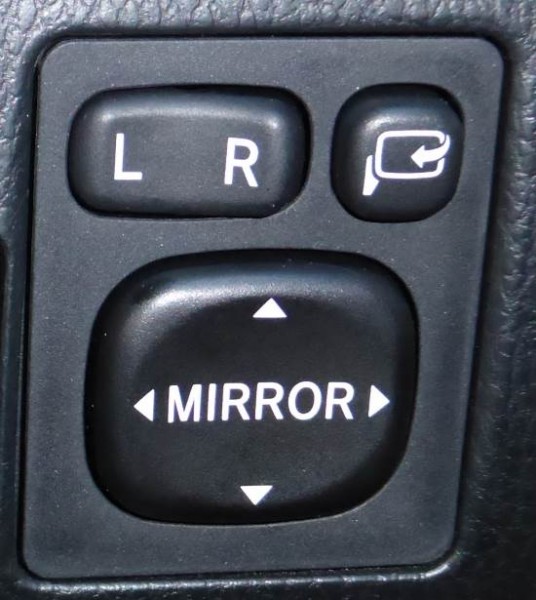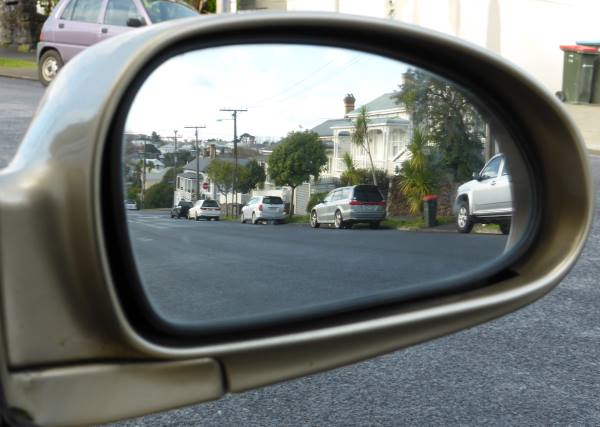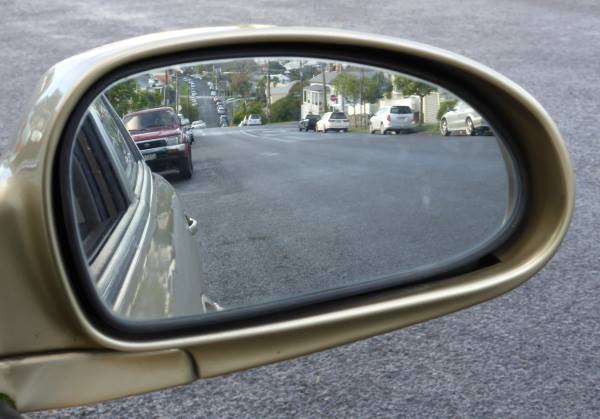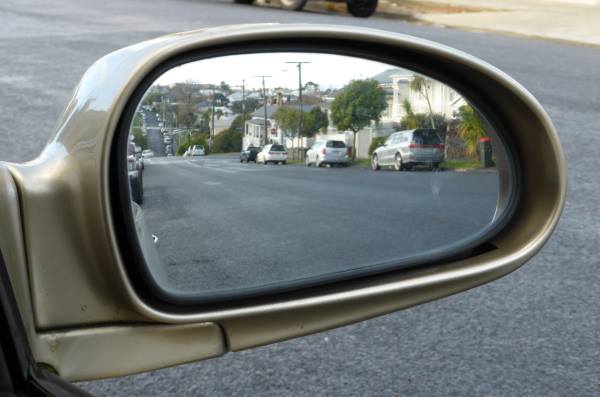Many people drive around with their wing mirrors set incorrectly. The function of wing mirrors is to minimise your blind spots, allowing you to see other road users approaching from behind you. However, they don’t completely eliminate your blind spot – you still need to look over your shoulder when pulling out of a parking space or changing lanes.
Adjusting your mirrors
Most modern vehicles have some kind of electric adjustment. Older vehicles often have a lever or stalk on the inside of the car where the wing mirror joins the door. Even older vehicle have neither of these and you have to open the window to manually move the mirror.
An electronic adjustment will look similar to this.

The top left button determines whether your adjustments will affect the left or right mirror. The larger 4-way button controls left, right, up and down for the selected mirror. The button at the top right folds the mirrors inwards which is useful if you are parking in a tight spot to avoid damage to the mirrors from other vehicles or pedestrians making their way between cars.
Setting your mirrors
Too far out
In this image you can’t see your car. It makes it difficult to judge your position when reversing and also creates a large blind spot for cyclists approaching.

Too far in
In the following image, the mirrors capability to show you what’s around is diminished by having too much of your car in view. You don’t need to see much of the side of your car. While you have a good view of the line of cars behind you, and you’d be able to see cyclists, you have a larger blind spot in the lane adjacent to you than is necessary.

Adjusted correctly
This image shows the mirror adjusted correctly. Your own personal preference might be for it to be angled a little further up or down, but in terms of the relationship between seeing the edge of the car and the lane next to you, it’s perfect. You will see cyclists approaching from your rear, and you minimise (but don’t eliminate) the blind spot in the lane next to you. You will still need to check over your shoulder when changing lanes or pulling out of a parking space.

Rear view mirror
Adjust your rear view mirror so that you can see as much of the lane behind you as possible. Most rear review mirrors are of sufficient size that you can see the whole of the rear window, so angle it so that it’s best for you, and remember that if you adjust your seat that your mirrors will need to be adjusted, too.
If you drive someone else’s car, e.g. your driving instructor’s car, or a friend’s car, make sure you adjust the mirrors so that they suit you. This is about safety, not about the minor inconvenience you cause to the other driver.
